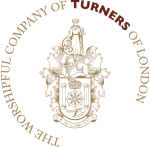 Members of the Livery who attended our Ladies’ Dinner in April 2010 will remember the talk given by Caroline Barron, until recently Professor of the History of London at Royal Holloway College, University of London, about the medieval Turners of London.
Members of the Livery who attended our Ladies’ Dinner in April 2010 will remember the talk given by Caroline Barron, until recently Professor of the History of London at Royal Holloway College, University of London, about the medieval Turners of London.
Our Company’s detailed records begin in 1593, the date of the first volume of surviving Wardens’ Accounts. For earlier years we have hitherto had to rely on occasional references to Turners in various City documents.
These references, many of which are picked up in the Company history, give a series of snapshots of activities of the Company and its members, but broader conclusions are difficult to draw.
During the later medieval period (fourteenth, fifteenth and sixteenth centuries) turning was a significant craft in London, and Turners played an active role in the City: but our knowledge of their day-to-day life and work has been patchy and haphazard.
In the course of preparing her talk, Caroline Barron identified and looked into several new sources of information about medieval Turners.
Among the records of the two church courts in London she found seventeen wills of men calling themselves citizens and Turners. Eleven of them lived in the parish of St Andrew Hubbard in Eastcheap.
Neither the church nor the parish survived the Great Fire, but by a happy chance the churchwardens’ accounts did, and are the second new source of light on medieval Turners. The third are legal cases.
It was clear after Caroline Barron’s excellent talk that there was more useful work to be done on the sources which she had identified.
The Company therefore invited Miss Doreen Leach, a postgraduate student at Royal Holloway College who had already worked on the archives of the Carpenters’ Company, to prepare a report on “the life and social environment of Turners in the period before the Company’s own records are extant”.
This work was undertaken in the second half of 2010, and is now complete. It draws largely on the new sources, but also reflects older material which appears in the Company history.
In consequence it has been possible to reconstruct for the first time something of the lives of medieval Turners, their families, friends and associates, and their place in the community.
 By the standards of the time, many Turners were quite comfortably off, but not wealthy. Some were prosperous enough to pay to be buried inside St Andrew Hubbard, but none have memorial brasses put up in their memory.
By the standards of the time, many Turners were quite comfortably off, but not wealthy. Some were prosperous enough to pay to be buried inside St Andrew Hubbard, but none have memorial brasses put up in their memory.
It is perhaps surprising that there were not more of them. The report identifies by name just over 100 Turners working in London between 1250 and 1600: there may have been ten times as many carpenters. Of course there would have been other Turners who we cannot trace, but probably not that many.
Basic items like cups and bowls could be produced cheaply and quickly, and there was not much demand for ornamental turning before the seventeenth century.
A relatively small and not particularly affluent craft would not have been expected to play a large part in the governance of medieval London, and the Turners did not.
However, in their local parish of St Andrew Hubbard, Turners were prominent, running the church, serving as churchwardens, auditing the accounts and supporting the fraternity of the turners.
None, alas, sought to fund a permanent event on the Gardner Williams model.
The wills of medieval Turners reflect their affection and concern for their families and apprentices. There is less of a tradition of son succeeding father in the craft than you might expect.
When the Turner John Spratly came to make his will in 1596 his son Joseph was with Sir Francis Drake on what proved to be the great Captain’s final voyage to the Spanish Main.
The elder Spratly asked the Company to look after the proceeds of his estate until his son returned: if he did not, the money was to go to the elder Spratly’s sister. Extracts of John Spratly’s will are shown above.
The Turners’ widows seem to have been a robust group, justifying the ancient Clerk’s Toast, at the end of Company dinners (a custom which ended in 2019), to “the buxom widows of the Turners of London”.
They often acted as their husbands’ executors, and although rarely Turners themselves, took on the running of the business, including responsibility for apprentices.
Alice La Turnure, possibly a widow running her late husband’s business, is recorded as having, very properly, raised “the hue and cry” in 1325 after a gatekeeper at Newgate Prison had been murdered.
These highlights are no substitute for reading a fascinating report in full. It is an admirable piece of work, on which the Standing Committee have congratulated Doreen Leach, and a valuable addition to our knowledge of the Company in its earlier days.
By Christopher Roberts
Master 2009-10
This is an updated version of an article first published in The Turner June 2011 (No.36)
